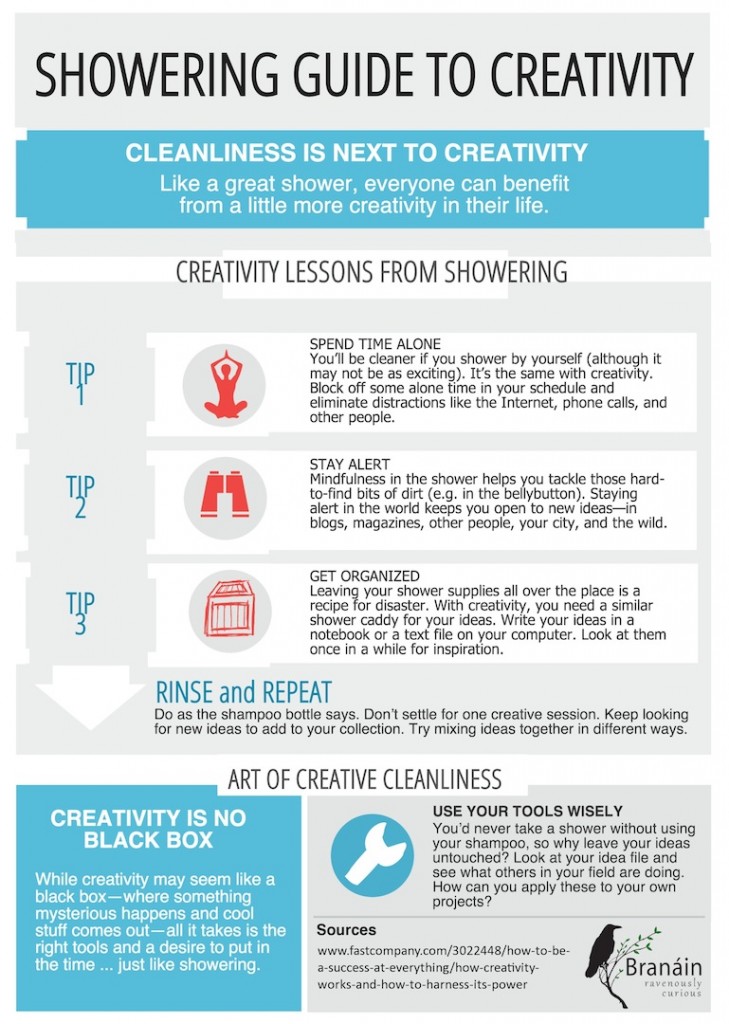If you want to be an artist — maybe a writer or a painter, or one of those people who designs window displays at big name department stores in New York City — what’s the one thing you need?
Talent?
Sure, that helps. But you can learn skills that you need to create your art.
A real job to pay the bills?
Well, yes. That’s nice, too. Unless you’re okay with living off your friends and family until you strike it rich.
What about … creativity?
Yes, that’s the one. Think about a famous artist that you admire — Stephen King? Picasso? Maya Angelou? — and immediately you start to conjure up thoughts of his or her unlimited creativity.
How can they create something so wonderful out of thin air? Or so many somethings so wonderful?
Creativity Is a Gift … For Everyone
We often think that creativity is a gift. Like the ability to curl your tongue or do crazy double-jointed things to amaze your friends. Something you are born with, an amorphous skill that was imparted to you from on high … way up on high, beyond the reach of mere non-creative mortals.
But creativity isn’t all that baffling. Think of it as a black box, maybe like one you’d see in a factory or a laboratory.
First, you feed things into the box. These are the raw materials.
Then, inside the black box certain processes happen. This is creativity at work (and yes, it gets a break every few hours … union rules).
Out of the box comes wonderful stuff. Creative stuff. Stuff that makes you say, “Whoa! Where did that come from?”
Demystifying the Creative Black Box
This whole nothing-to-something creative process, however, is not at all that mystical. Let’s break it down.
Raw materials. Every product comes from something. It’s the same thing with creating art or stories or window displays. Most creative ideas come from — you guessed it — other ideas. Nothing comes from nothing. Everything comes from something.
Take a look at Twitter. Sure, at the time it was amazing. But the developers didn’t pull Twitter out of thin air. They took several ideas and mashed them together: text messaging, blogs, and social media. Voila! A new creature.
Finding raw material for your own creative endeavors is just a matter of staying alert to the world. There are plenty of ideas sitting around waiting to be used. The trick is keeping your eyes and ears open. This allows you to notice them and absorb them for later use. Mindfulness meditation is a big help with this step.
Black box. The inner workings of the creative black box is nothing top-secret. Basically, what goes on inside the black box is that you put ideas together in different ways until you have something new and exciting. When I put it like that, it sounds easy.
Well, it is. And hard. Yes, at the same time. One of the tricks to making the creative black box work for you is to let go of trying to control it. Some of the most wonderful ideas just happen, without explanation.
That means turning off your internal editor, the part of your mind that judges every new thought that you have. If you stop after each thought to give it a thumbs up or thumbs down, you’ll never have time to find the truly wonderful ideas.
Many (if not most) of your ideas will be garbage. Being creative involves churning out ideas as wildly as possible without judging them as you go. Later, you can go back and look for nuggets of genius among the plain rock.
Go Ahead, Take a Shower
So what does any of this have to do with showering? Plenty. Check out this infographic and you’ll see that the art of cleanliness can serve as a guide for stimulating your creativity.
Try it out. Does it work for you?
Do you have other methods of stimulating your creativity that work?
(click infographic to enlarge)
_____
Infographic: A Showering Guide to Creativity © 2013 by Shawn Radcliffe / Branáin
Photo: fake elephant man-made waterfall, Flickr by inajeep
Source: Fast Company, How Creativity Works and How to Harness Its Power



